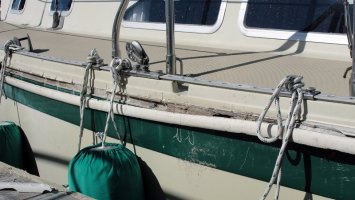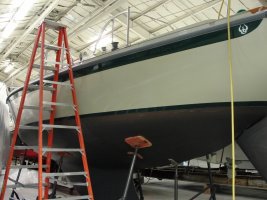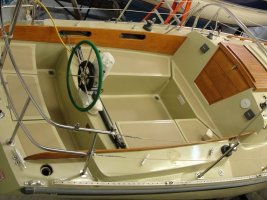I am not sure if your hull to deck joint was done the same way as mine. But if it was, then this is a quick summary of what you will need to do. The hull and deck both have outward facing flanges. It appears that a piece of wood maybe an inch tall was placed between them(for an extra inch of headroom as the story goes). The hull to deck joint was then fiberglassed from the inside all the way around the boat. The piece of wood then had no structural impact other than to act as a spacer prior to the hull and deck being glassed together on the inside of this joint. This is visible in my picture album showing the storm damage.
The wood strip was originally used to accept screws holding the rigid vinyl track to the hull. The rubber insert then followed to cover the fasteners and become the outwardmost edge of the rub rail. Over 33 years of life the wood behind my rubrail had started to decompose. Much of it had turned to dust. In addition, the PO had replaced a few areas of the wood and glassed/epoxied replacement pieces into the channel formed by the hull and deck flanges. All of the old wood and replacement bits had to be ground out to create a clean channel in which to put the new wood strip to which the new rub rail would be fastened.
We used white oak cut to size, and planed as necessary, for the replacement wood. It is held into the channel with 5200. The new toe rail track was then screwd into the oak. After the insert was put in place, the top and bottom of the toe rail were sealed with a bead of matching gray 5200 where the toe rail meets the hull. We took this opportunity to remove, clean up, and paint the aluminum ends and bow cover gray to match the toe rail. The new hard rubber track is quite stiff. You must warm it up and work with it to get it to lay nice and straight.




